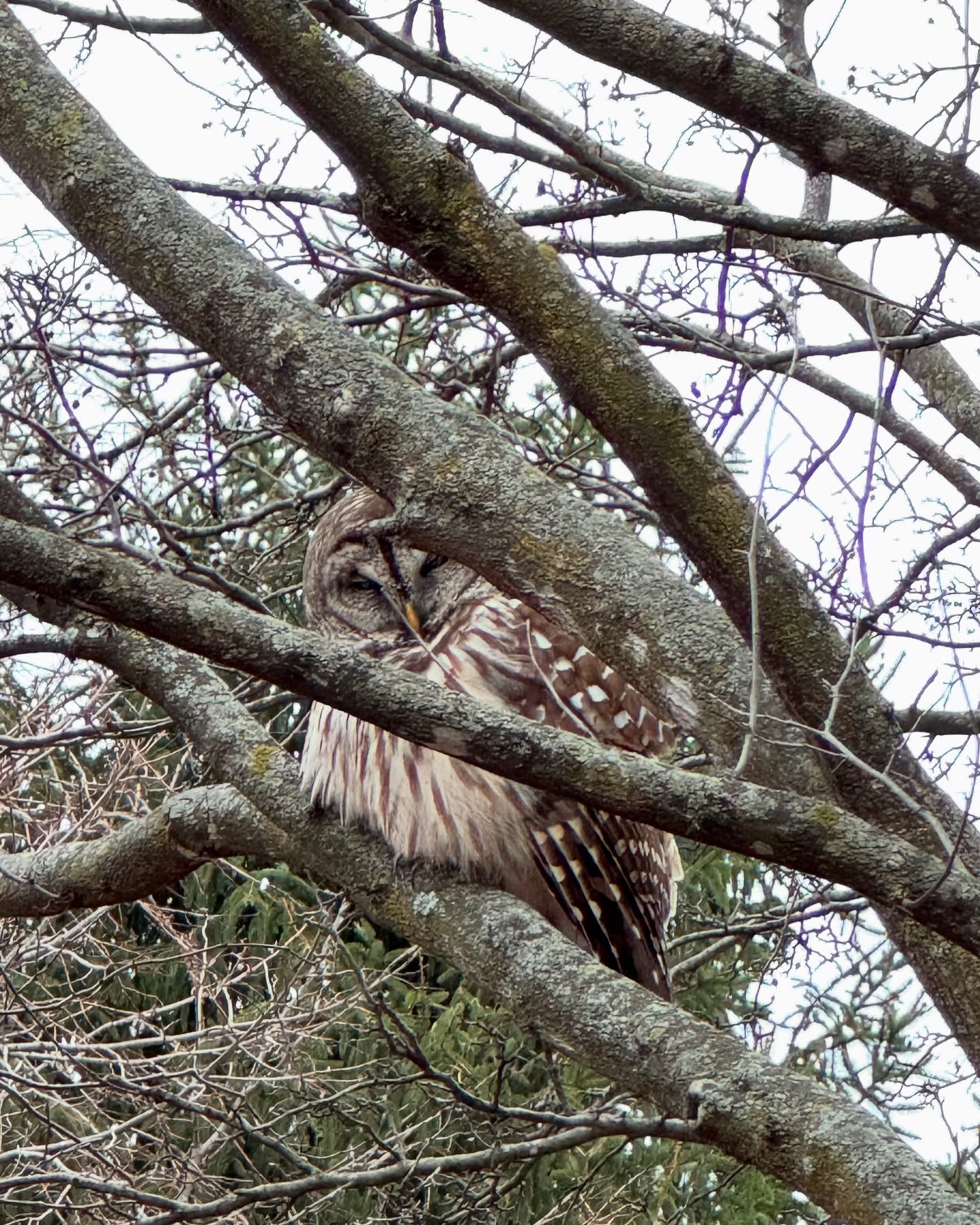- Understanding the ecological role of owls in natural habitats.
- The significance of butterfly gardens in promoting biodiversity.
- How wildlife conservation efforts can impact local ecosystems.
- The importance of seasonality in the behavior and survival of native species.
- Cross-species interactions within managed environments.
In the serene backdrop of a Native Butterfly Garden, an unexpected visitor graced the day with its presence—a majestic owl, seemingly preparing itself for the impending snowfall. Observations like these offer a rare opportunity to delve into the interconnections within ecosystems, the important conservation work done in these managed habitats, and the profound roles that different species play in their environments.
Owls hold a pivotal ecological role as predators, balancing populations of small mammals and insects. These interactions have wider ecological implications. For instance, by controlling rodent numbers, owls inadvertently aid in reducing agricultural losses. Their presence is a testament to a healthy ecosystem, as they thrive best in balanced food webs.
The occurrence of an owl in a butterfly garden might seem surprising, yet it underscores the significance of such spaces in fostering biodiversity. Butterfly gardens are not just sanctuaries for lepidopterans. They are complex networks that support various forms of life, promoting a robust ecosystem. These gardens become attractive to many species by providing food resources, shelter, and breeding grounds. The sighting of the owl highlights the garden’s success in offering a hospitable environment for diverse fauna.
Efforts in wildlife conservation are crucial in this context. Native gardens, diligently curated with indigenous plants, cater to the dietary and habitat needs of local species. Such initiatives combat habitat loss, offering refuges in urban landscapes. By creating niches for both flora and fauna, these habitats become functioning ecosystems capable of sustaining intricate webs of life.
The behavioral adaptations of species to seasonal changes are critical for survival and underscore the importance of timing in nature. As the days shorten and temperatures drop, animals like the owl adjust their behaviors. Owls may increase their hunting activities in preparation for winter, storing fat reserves when food scarcity becomes a challenge. This adaptation is a survival strategy shared by many creatures enduring seasonal shifts.
Cross-species interactions are key to understanding ecosystems. Managed environments, like the butterfly garden, create opportunities for unique interactions. Owls in these settings may act as natural pest controllers, benefiting the garden by preying on insects that might otherwise harm plants. Such instances illustrate how human-managed environments can foster natural processes, contributing to ecological welfare.
Observing these dynamics within a managed garden provides valuable insights into the broader principles of zoo management and wildlife conservation. It emphasizes the need for thoughtfully designed habitats that adhere to ecological principles, ensuring support for the diverse needs of wildlife. Education and public engagement are instrumental in promoting awareness and action for conservation efforts.
As we anticipate the snowflakes, the presence of the owl in the butterfly garden reminds us of the profound connections within nature. Each species, location, and season plays a part in shaping the ecological narrative of our surroundings. Through diligent conservation efforts and mindful ecological stewardship, we can continue to witness and celebrate these interactions in our backyards, parks, and communities.
*****
Source Description
Look “who” stopped by our Native Butterfly Garden this afternoon!🦉 This owl friend was getting ready for the snowflakes. ❄️
📷: Zana Sueme

